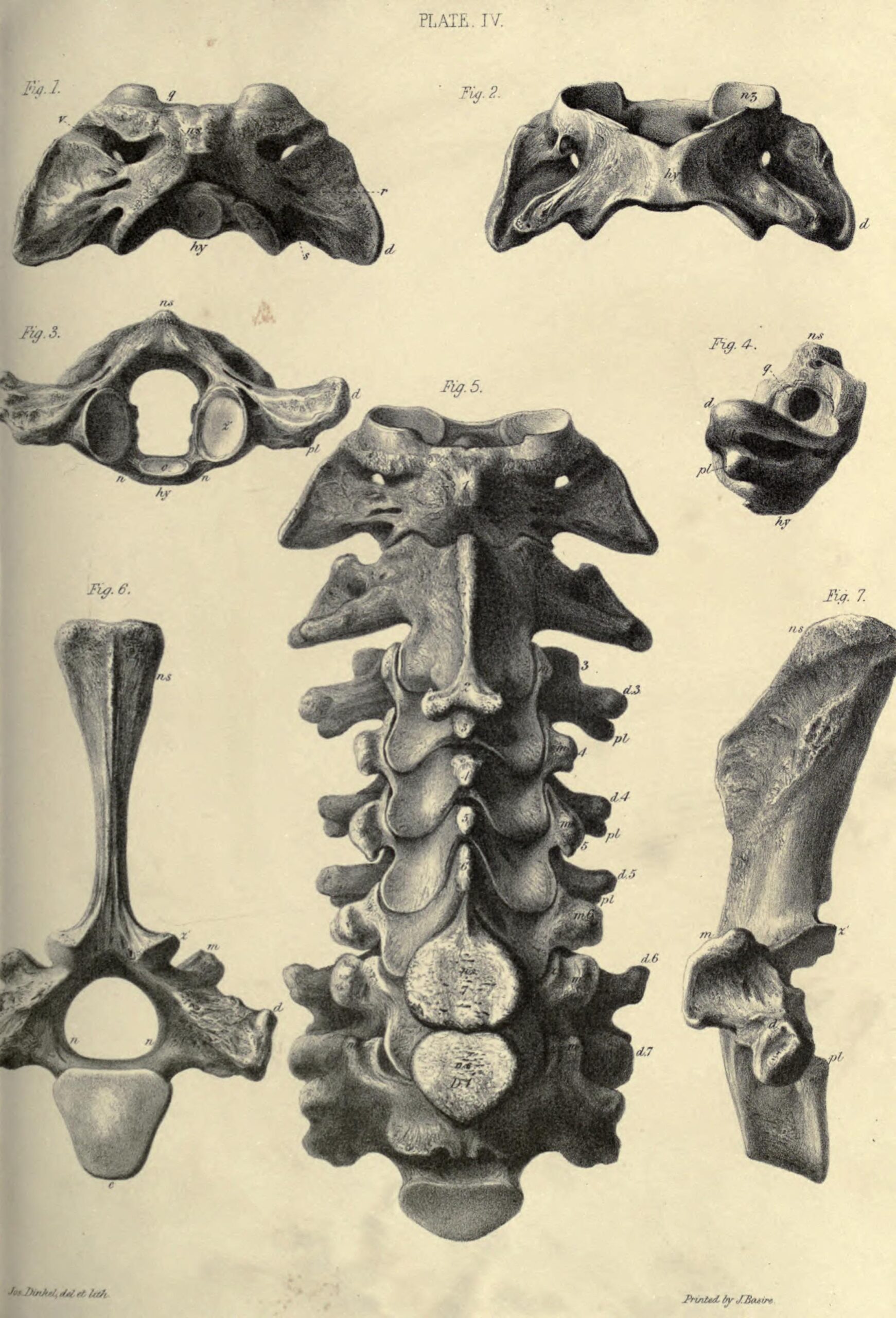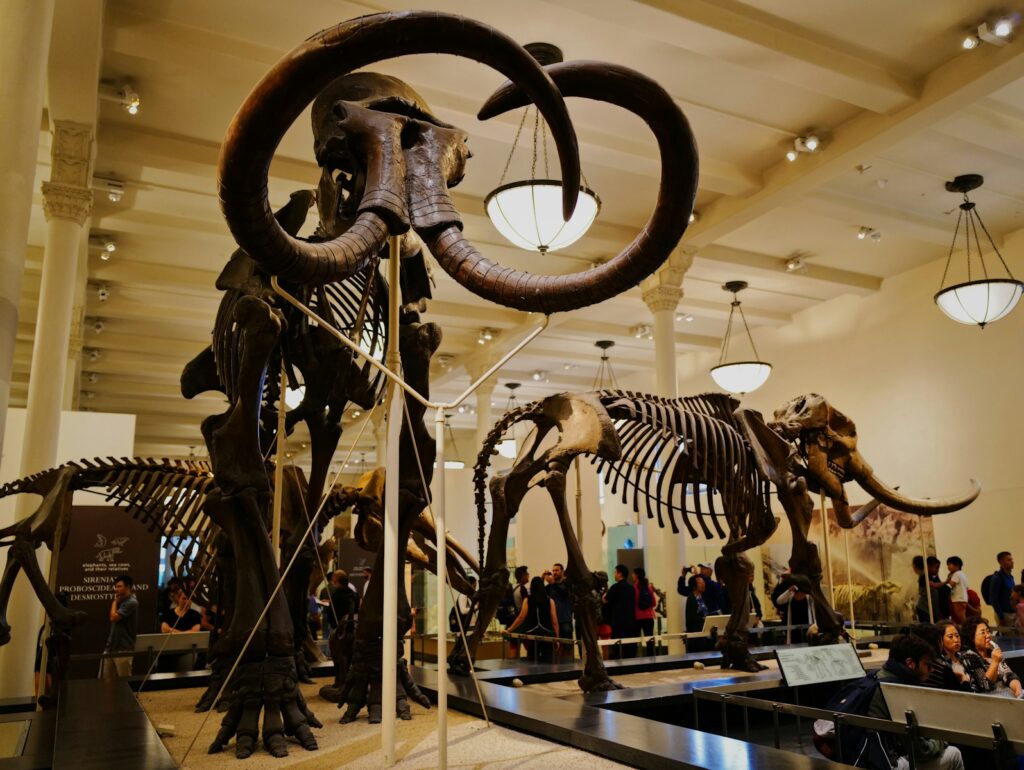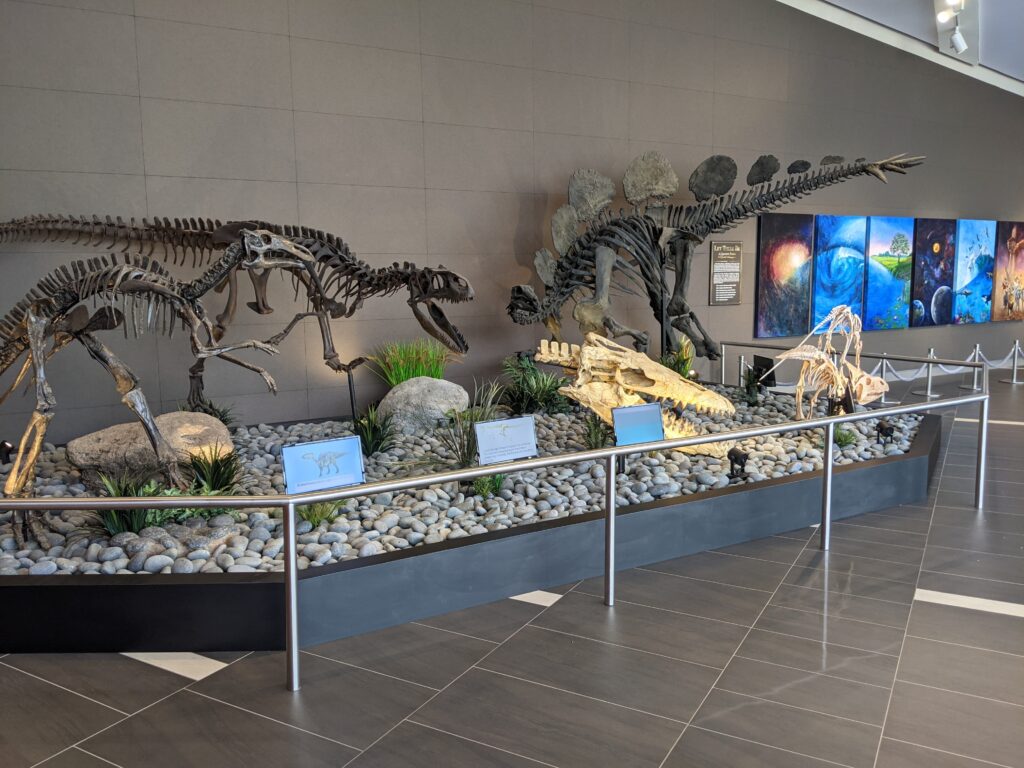When we think of massive prehistoric creatures, T-Rex and Brontosaurus usually come to mind. But what if I told you that some ancient animals made even the largest dinosaurs look like house pets? Throughout Earth’s history, creatures of unimaginable size roamed our planet, swam in ancient seas, and soared through prehistoric skies. These titans lived alongside dinosaurs or in eras when reptilian giants hadn’t even evolved yet.
The Titanic Terror of Ancient Seas: Leedsichthys

Imagine a fish longer than three school buses parked end to end, and you’ll start to picture Leedsichthys problematicus. This gentle giant of the Jurassic seas stretched up to 54 feet in length, making it the largest bony fish that ever lived. Unlike the fearsome marine reptiles of its time, this massive creature was a filter feeder, peacefully cruising through ancient oceans with its mouth wide open.
What makes Leedsichthys even more remarkable is that it lived alongside famous marine dinosaurs like Plesiosaurus, yet dwarfed them completely. Its fossils were so large that early paleontologists thought they belonged to a dinosaur, not a fish. The creature’s feeding strategy resembled modern baleen whales, using specialized gill structures to strain tiny organisms from the water.
When Sharks Ruled Everything: Megalodon

The prehistoric ocean’s ultimate predator makes even the largest dinosaurs seem manageable by comparison. Carcharocles megalodon reached lengths of up to 82 feet, with jaws powerful enough to crush a small car. To put this in perspective, a fully grown Megalodon could have swallowed a T-Rex whole without much trouble.
These apex predators ruled the seas for over 15 million years, long after dinosaurs had vanished from Earth. Their teeth, some as large as your hand, are still washing up on beaches today. Scientists estimate that Megalodon’s bite force reached 40,000 pounds per square inch, making it one of the most powerful bites in Earth’s history.
The Flying Fortress: Quetzalcoatlus
Picture a giraffe with wings, and you’re getting close to visualizing Quetzalcoatlus northropi. This pterosaur stood as tall as a modern giraffe when on the ground, with a wingspan that could stretch across a basketball court. At 35 feet from wingtip to wingtip, it remains the largest flying animal ever discovered.
What’s truly mind-boggling is how this creature managed to get airborne at all. Weighing as much as 550 pounds, Quetzalcoatlus had to use powerful leg muscles to launch itself into the sky, much like modern birds do today. Once airborne, it could soar for hours without flapping, using thermal currents to stay aloft while scanning the landscape below for food.
The Giant That Walked Before Dinosaurs: Coryphodon
Long before dinosaurs dominated the land, massive mammals like Coryphodon roamed North America and Asia. This bear-like creature measured up to 7 feet tall and 16 feet long, making it larger than most dinosaurs that would come later. Its huge size helped it dominate the early mammalian world of the Paleocene epoch.
Coryphodon had a brain roughly the size of a walnut despite its massive body, proving that big doesn’t always mean smart. These gentle giants spent their days munching on soft vegetation near rivers and swamps. Their fossils show evidence of sexual dimorphism, with males sporting impressive canine teeth that they likely used for display rather than hunting.
The Armored Giant: Dunkleosteus

Before sharks ruled the seas, armored fish like Dunkleosteus terreus were the ocean’s top predators. This 30-foot monster didn’t have teeth in the traditional sense, but instead wielded razor-sharp bone plates that could slice through almost anything. Its bite force has been estimated at 36,000 pounds per square inch, rivaling that of T-Rex.
What made Dunkleosteus particularly terrifying was its speed and agility despite its massive size. Unlike many large prehistoric predators that relied on ambush tactics, this armored fish could actively pursue prey through the water. Fossil evidence suggests it even practiced cannibalism, feeding on smaller members of its own species when other food was scarce.
The Crocodile That Hunted Dinosaurs: Sarcosuchus
Sarcosuchus imperator, nicknamed “SuperCroc,” measured up to 40 feet in length and weighed as much as 8 tons. This massive crocodilian lived alongside dinosaurs in Cretaceous Africa, and fossil evidence suggests it actively hunted them. Its skull alone was nearly 6 feet long, equipped with over 100 teeth designed for gripping and crushing.
Unlike modern crocodiles that spend most of their time in water, Sarcosuchus was equally comfortable on land and in rivers. It continued growing throughout its entire life, which could span over 50 years. The largest specimens likely reached sizes that would make even the biggest dinosaurs think twice about approaching a riverbank.
The Snake That Could Swallow a Car: Titanoboa
In the steamy rainforests of prehistoric Colombia, a snake longer than a city bus slithered through the undergrowth. Titanoboa cerrejonensis stretched up to 50 feet in length and weighed over a ton, making it the largest snake that ever lived. This massive serpent lived just 5 million years after the dinosaurs went extinct, taking advantage of the warm climate to grow to unprecedented sizes.
The discovery of Titanoboa revolutionized our understanding of ancient climates, as snakes are cold-blooded and their size directly correlates with temperature. For this giant to survive, average temperatures would have been much warmer than today. Its preferred prey likely included large crocodiles and primitive mammals, which it would constrict with crushing force before swallowing whole.
The Ocean’s Gentle Giant: Shastasaurus
Shastasaurus sickanninensis holds the record as the largest marine reptile ever discovered, reaching lengths of up to 69 feet. This ichthyosaur lived during the Late Triassic period, when dinosaurs were just beginning to diversify on land. Despite its enormous size, Shastasaurus was likely a filter feeder, similar to modern baleen whales.
What makes this creature particularly fascinating is its dolphin-like body shape, perfectly adapted for life in ancient seas. Its long, narrow snout contained no teeth, suggesting it fed on soft-bodied prey like squid and small fish. The largest specimens would have been longer than most blue whales, making them true giants of the ancient ocean.
The Walking Whale: Basilosaurus
Basilosaurus cetoides represents one of evolution’s most dramatic transformations, as this 60-foot whale still retained tiny hind legs from its land-dwelling ancestors. Living 40 million years ago, this serpentine whale was longer than most dinosaurs and ruled the ancient Tethys Sea. Its elongated body moved through the water like a massive sea serpent.
Unlike modern whales, Basilosaurus had a mouth full of different types of teeth, indicating a varied diet that included fish, squid, and even smaller whales. Fossil evidence suggests these creatures were capable of hunting in packs, working together to take down large prey. Their spine was so flexible that they could literally tie themselves in knots while swimming.
The Giant Ground Sloth: Megatherium

Megatherium americanum stood 12 feet tall on its hind legs and weighed as much as an elephant, making it one of the largest land mammals that ever lived. This massive ground sloth roamed South America until relatively recently, disappearing only about 10,000 years ago. Its enormous claws, some over a foot long, were used for stripping leaves from trees rather than hunting.
What’s remarkable about Megatherium is that it lived alongside early humans, who likely contributed to its extinction through hunting. These gentle giants could rear up on their hind legs to reach vegetation 20 feet off the ground, using their massive tails for support. Their thick skin and large size made them nearly invulnerable to most predators, including saber-toothed cats.
The Terror Bird: Kelenken
Standing 10 feet tall with a skull larger than a horse’s head, Kelenken guillermoi was South America’s apex predator during the Miocene epoch. This flightless bird had a beak measuring nearly 2 feet long, perfectly designed for delivering devastating strikes to prey. Its powerful legs could propel it at speeds of up to 30 miles per hour across the ancient pampas.
Kelenken belonged to a group called terror birds, and it was the largest of them all. These feathered predators filled the ecological niche that large carnivorous dinosaurs had left vacant. Their intelligence, speed, and powerful beaks made them formidable hunters capable of taking down prey much larger than themselves, including early horses and other mammals.
The prehistoric world was home to creatures that challenge our understanding of what life on Earth was capable of achieving. These ancient giants remind us that dinosaurs, impressive as they were, shared their world with even more spectacular animals. From filter-feeding fish the size of subway cars to walking whales with vestigial legs, Earth’s history is filled with creatures that push the boundaries of imagination. What other colossal beasts might still be waiting in the fossil record to amaze us?




